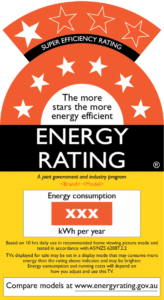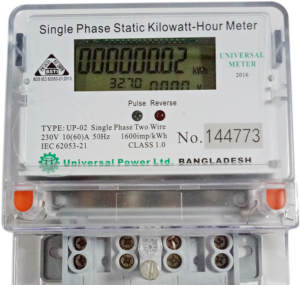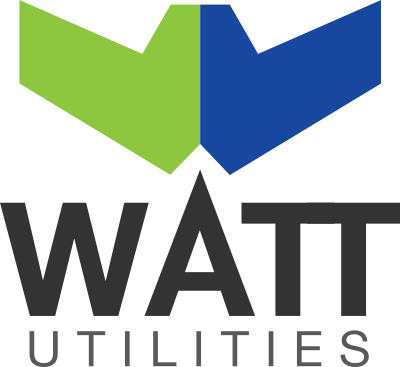There will be no change to your utilities supplier until such time as you give Watt Utilities permission to do so, in writing.
Please contact us. If we are already managing the procurement of your utilities, our first step is to check for any billing inaccuracies. Should the billing be accurate but the amount in question looks too high, we may then recommend an energy audit of your premises to determine if there is any faulty equipment contributing to any excess energy usage.
Power of choice give you control over the way you manage your electricity usage via a smart meter. A smart meter measures your energy usage digitally and as a result there is no need for a retailer or representative to physically read your on-site meter. Smart Meters allows Watt Utilities to provide you with comprehensive and up to date information about your electricity consumption via our customer access portal (Watts Mine).
The wholesale energy market includes the National Electricity Market (NEM), a wholesale electricity exchange for the states and territories of Queensland, New South Wales, the Australian Capital Territory, Victoria, South Australia and Tasmania.
We find the most cost-effective energy contract available and proactively manage your entire energy portfolio.
Each solution is unique and the costs associated with each solution vary accordingly. All our fees and charges comply with the National Customer Code.
Watt Utilities can assist you in various ways. We offer a no-obligation review of your current contract to identify potential savings. Our services include providing access to our secure Utilities Management Portal for informed decision-making on accounts, examining current contracts hidden costs, savings opportunities, and negotiating new agreements.
As Watt Utilities isn't a retailer, you pay your utilities bill via your supplier / retailer.
Electricity offers fall in either of the two types of offer:
Standing retail contracts
These are basic contracts with terms and conditions that are specified under the National Energy Retail Rules. While it is the default contract that a retailer provides to customers who have not accepted a market contract, the standing contract may also apply where a customer:
In south east Queensland prices have been deregulated and standing offer prices are set by retailers. However, for the first year of deregulation, once retailers have set standing offer prices they were not allowed to increase their prices.
In regional Queensland, standing offer prices are the notified prices that are decided under section 90(1) of the Electricity Act 1994.
Market contracts
Market contracts contain a minimum set of terms and conditions that are specified in the National Energy Retail Rules, and other terms that are agreed between the retailer and the small customer. These contracts may be generally available or offered only to specific customers and may be for a fixed term or be ongoing ('evergreen' contracts). Some retailers may also provide contracts that have a fixed benefit period (e.g. a discount might apply for a period that is less than the term of the contract). Prices under market contracts are set by the retailer. Retailers can also differentiate their market contracts through:
If you're unsure about your type of contract, it is best to ask your retailer.
More information: The Australian Energy Regulator (1300 585 165 or www.aer.gov.au).
To maximise the savings that a Solar system can deliver, the optimal scenario is for the site in question to utilise all of the solar power generated at that site. If the site in question generated more power than it consumes, the excess power generated can be fed back into the grid.
This excess power attracts a payment from the energy retailer in question and this fee is known as the Feed-In Tariff.
Note: The price paid for electricity fed into the grid via on-site Solar is usually less than the price paid for electricity supplied by the retailer, from the same grid.
Power Factor Correction equipment is used to alleviate technical problems associated with poor power quality.
The installation of Power Factor Correction Equipment can be a cost effective way of improving the efficiency of your electrical power system, reducing the cost of your electricity and carbon emissions.
PFC equipment can be installed in both new and existing electrical systems.
You should consider implementing a Power Factor Correction equipment if your Power Factor is under 0.90.
If you are a Watt Utilities VAS customer, we will automatically analyse this aspect of your electricity supply and where applicable advise you to obtain a obligation free PFC quote.
Stepped pricing means the pricing will vary year to year depending on the contract term you choose.
Flat pricing means once you choose your term length (i.e. 12, 24, 36, 48 months etc) the pricing will be the same every year for that chosen term.
An EWR (Electricity Works Request) and a Safety Certificate are both required. Both documents needs to be filled out and completed by an authorised electrician.
The amount of time it takes to set up a new connection varies depending on the electricity retailer and how quickly the required documents are submitted. Typically a new connection will take between 15-30 days from initial application through to completion.
Complete and sign a Watt Utilities LOA, so that an account can be established with an electricity retailer. Ensure that the main switch on the site has been turned off. Then depending on which retailer is involved, this task typically takes between 3 to 7 days to be completed.
Simply send Watt Utilities a copy of a recent bill and a copy of a council rates or water notice. Providing the address on both documents is correct, we will work with the retailer to amend the incorrect address.
Changes in prices generally reflect variations in electricity demand, the type of generation sources (i.e. wind, solar, fossil, etc), fuel costs, weather fluctuations, major events and power plant availability.
Prices are usually highest during the hottest summer periods and coldest winter periods, when electricity demand is at its highest.
Every site requires a meter so that energy usage can be billed accurately.
Retail electricity contracts allow consumers to enter into a Direct Metering Agreement (DMA).
By utilising a DMA, Watt Utilities can automatically compare your actual metered data against that electricity usage which the retailer states you have used, via your electricity bill.
A DMA is the only way in which a customer can independently verify that they are accurately paying for the electricity that they have actually used.
As part of the service we offer the service to our customers, we are constantly watching and analysing the electricity market.
The timing for tendering a new contract is not based on the existing contract end date but is based on when our analysis states that it is the most opportune time to so.
The customer is always free to tender a new contract at a time of their choosing, regardless of our recommendation.
Any customer who does not have a specific negotiated rate, is charged the default rate and the default rate varies depending on the retailer. The default rate applies when your current contract expires. Default rates are always higher than the negotiated rate and the default rate can be up to three times higher than the negotiated rate.
If you are a small market customer, you are not locked into a contract and you can change retailers any time.
The purchase of utilities from the Body Corporate should be detailed in the by-laws for your specific community. State based Power of Choice Legislation will then determine your energy supply options.
Utilities are supplied to your residence via the available retailers, not via Watt Utilities.
There will be no change to your utilities supplier until such time as you give Watt Utilities permission to do so, in writing.
Please contact us. If we are already managing the procurement of your utilities, our first step is to check for any billing inaccuracies. Should the billing be accurate but the amount in question looks too high, we may then recommend an energy audit of your premises to determine if there is any faulty equipment contributing to any excess energy usage.
If Watt Utilities does not currently manage the procurement of your utilities, please contact us to discuss what options are available to you.
Power of choice give you control over the way you manage your electricity usage via a smart meter. A smart meter measures your energy usage digitally and as a result there is no need for a retailer or representative to physically read your on-site meter. Smart Meters allows Watt Utilities to provide you with comprehensive and up to date information about your electricity consumption via our customer access portal (Watts Mine).
The Body Corporate retains ownership of the modified switchboard, but the individuals unit meters can be earned the Body Corporate or be earned by the metering provider, who will then rent the meters to the Body Corporate.
The wholesale energy market includes the National Electricity Market (NEM), a wholesale electricity exchange for the states and territories of Queensland, New South Wales, the Australian Capital Territory, Victoria, South Australia and Tasmania.
The NEM is a spot market where supply and demand are matched in real time under the management of an industry authority, the Australian Energy Market Operator (AEMO). Generators bid to supply quantities of electricity at defined price bands every five minutes, every day. Based on demand and cost-efficiency, AEMO determines the volume of generators required to produce electricity to meet demand. AEMO then dispatches these generators into production, charging the corresponding dispatch price.
A dispatch price is determined every five minutes, and six dispatch prices are averaged every half hour. This determines the spot price across the NEM. AEMO uses the spot price as the basis for the settlement of financial transactions (the price wholesalers or retailers pay) for energy traded in the market.
Retailers utilise wholesale derivative markets (including ASX traded and over-the-counter financial products), predominantly including financial swaps and caps, to insure against volatile spot prices. These products also influence the price you pay for energy.
We find the most cost-effective energy contract available and proactively manage your entire energy portfolio.
Each solution is unique and the costs associated with each solution vary accordingly. All our fees and charges comply with the National Customer Code.
Watt Utilities can assist you in various ways. We offer a no-obligation review of your current contract to identify potential savings. Our services include providing access to our secure Utilities Management Portal for informed decision-making on accounts, examining current contracts hidden costs, savings opportunities, and negotiating new agreements.
As Watt Utilities isn't a retailer, you pay your utilities bill via your supplier / retailer.
To maximise the savings that a Solar system can deliver, the optimal scenario is for the site in question to utilise all of the solar power generated at that site. If the site in question generated more power than it consumes, the excess power generated can be fed back into the grid.
This excess power attracts a payment from the energy retailer in question and this fee is known as the Feed-In Tariff.
Note: The price paid for electricity fed into the grid via on-site Solar is usually less than the price paid for electricity supplied by the retailer, from the same grid.
Power Factor Correction equipment is used to alleviate technical problems associated with poor power quality.
The installation of Power Factor Correction Equipment can be a cost effective way of improving the efficiency of your electrical power system, reducing the cost of your electricity and carbon emissions.
PFC equipment can be installed in both new and existing electrical systems.
You should consider implementing a Power Factor Correction equipment if your Power Factor is under 0.90.
If you are a Watt Utilities VAS customer, we will automatically analyse this aspect of your electricity supply and where applicable advise you to obtain a obligation free PFC quote.
Stepped pricing means the pricing will vary year to year depending on the contract term you choose.
Flat pricing means once you choose your term length (i.e. 12, 24, 36, 48 months etc) the pricing will be the same every year for that chosen term.
Every site requires a meter so that energy usage can be billed accurately.
Retail electricity contracts allow consumers to enter into a Direct Metering Agreement (DMA).
By utilising a DMA, Watt Utilities can automatically compare your actual metered data against that electricity usage which the retailer states you have used, via your electricity bill.
A DMA is the only way in which a customer can independently verify that they are accurately paying for the electricity that they have actually used.
As part of the service we offer the service to our customers, we are constantly watching and analysing the electricity market.
The timing for tendering a new contract is not based on the existing contract end date but is based on when our analysis states that it is the most opportune time to so.
The customer is always free to tender a new contract at a time of their choosing, regardless of our recommendation.
Any customer who does not have a specific negotiated rate, is charged the default rate and the default rate varies depending on the retailer. The default rate applies when your current contract expires. Default rates are always higher than the negotiated rate and the default rate can be up to three times higher than the negotiated rate.
Charges set by the Australian Energy Market Operator (AEMO) for operating and administering the electricity market.
Charges set by the Australian Energy Market Operator (AEMO) for operating and administering the electricity market.
12 month consumption and demand summary.
Typically, those customers connected at 11 kV who are not allocated to the ICC tariff class.
A form requesting a Change of Retailer in MSATS.
The expiry date of the current or forward dated contract.
End of Standard business hours – usually 5pm (affected by daylight savings time in some states).
A number multiplied by a premise’s metered energy to account for electricity losses between the transmission control point and the consumer’s premise.
This refers to the network charges which recover the costs of providing Standard Control Services.
A retail contract that sets out the terms and conditions for the supply of electricity to the customers premises.
Energy Savings Credit due to the NSW Energy Savings Scheme. Applies to NSW customer sites only. (Mandatory Energy Efficiency Scheme).
NSW government scheme that creates financial incentives for organisations to invest in energy savings projects.
The rate that is paid for the excess energy generated by customers (commonly solar) and fed back into the electricity grid. The FiT rate is determined by the state Government and is paid by the purchaser of the excess energy.
Refers to the sub-11 kV network.
Customers connected at 110 kV or 33 kV, or connected at 11 kV and with electricity consumption greater than 40 GWh per year at a single connection point or demand greater than or equal to 10 MVA, or where a customer’s circumstances mean that the average shared network charge becomes meaningless.
A measure of efficiency of electrical energy usage. The ratio between volume of energy used over a period of time and the maximum kW demand x hours in the period i.e. how much of the total possible volume for a maximum demand in a period was used. The closer to 100% the more cost efficient a site is.
Large customer connections are those that fall within the tariff classes of Individually Calculated Customer (ICC) and Connection Asset Customer (CAC) including embedded generators with a capacity greater than or equal to 30 kVA.
As per tariff class assignment process for customers with consumption greater than 100 MWh per year. >40MWh (VIC+NSW).
A document giving another person, known as an “agent,” the authority to act on another person’s behalf, known as the “principal.” The letter spells out the specific task that the principal has assigned to the agent.
A load profile varies according to customer type (typical examples include residential, commercial and industrial), temperature and holiday seasons.
Large-Scale Renewable Energy Certificate. Federal Government Renewable Energy Scheme applies to customers in all states.
Refers to the sub-11 kV network.
A registered participant role within the National Electricity Market (NEM), with the overall responsibility for metering services at a customer’s connection point.
Metering Data Providers are appointed to collect, process and deliver metering data to participants and AEMO in the required file format.
The percentage of electricity that AEMO predicts will be lost in transmission between generator and end user. Resistive heat causes power loss when electricity travels along transmission lines, especially over long distances.
Responsible for installation, commissioning, gathering and verifying data remotely from meters within the National Energy Market (NEM) market.
The central repository for Standing Data for all NMIs in contestable markets.
The point at which connection assets join a distribution network, used to identify the distribution service price payable by a customer.
The interconnected electricity grid covering Queensland, New South Wales, Victoria, Tasmania, South Australia and the Australian Capital Territory.
The legal provisions (enforced by the AER) that regulate the operation of the NEM and the national electricity systems, the activities of market participants and the provision of connection services to retail customers.
A unique number assigned to each metering installation.
A Distributor nominated code that represents the network tariff being charged to customers for network services.
The tariff for use of the distribution and transmission networks. It is the sum of both Distribution Use of System (DUOS) and DPPC.
A measure of demand efficiency. The ratio of kW demand to apparent kVA demand at a point in time. The closer the power factor is to one (1), the more efficiently the network assets are utilised. Power factor = kW / kVA.
A power purchase agreement (PPA) is a legal contract between an electricity generator (provider) and a power purchaser (buyer, typically a utility or large power buyer/trader).
Large commercial and industrial customer consuming typically between 100MWH – 4GWh per annum.
A service-level agreement (SLA) is a commitment between a service provider and a client. Particular aspects of the service – quality, availability, responsibilities – are agreed between the service provider and the service user.
A definition for small consumers of energy where upper thresholds vary from state to state within the NEM network. Generally 40MWh in Victoria and New South Wales, 100MWh Queensland, 160MWh in South Australia.
Small-Scale Renewable Energy Certificate. Federal Government Renewable Energy Target applies to customers in all states.
A tariff type that includes an anytime energy (volume) charge and demand charges with seasonal and time-of-day dimensions.
Covers the loss of electricity through heat when transporting across a network of poles and wires. This percentage loss factor is calculated so customers don’t pay for power they don’t get.
A four digit code identifying the state and jurisdiction used in all transfers and registrations and application of the TLF rate.
Refers to tariffs that vary according to the time of day at which the electricity is consumed. The Time-of-use periods include Off-peak, Peak and Shoulder.
Superseded terminology for DPPC which are charges incurred for use of the transmission network.
Victorian Energy Efficiency Certificates. Applies to Victorian customer sites only. (Mandatory Energy Efficiency Scheme).
Australian Competition and Consumer Commission. Find out more here ACCC
The Australian Energy Regulator (AER) works to make all Australian energy consumers better off, now and in the future. They regulate electricity networks and covered gas pipelines, in all jurisdictions except Western Australia. They set the amount of revenue that network businesses can recover from customers for using these networks. Find out more here AER
A document that contains key information on an energy plan.
Also called fixed benefit period. The set time you get a particular benefit under the energy contract. For example, a discount for the first 12 months of the contract. There may be an exit fee if you end the contract during the benefit period. You can contact your retailer to find out if this applies to your contract.
A discount you might get on your energy bill if you do what you agreed to do. For example, you agreed you will pay the full amount of your bill on time and you do—you will get the pay on time discount.
Also called variable charge or usage charge. This is the cost of the electricity or gas you use.
Also called fixed term (except where the price is fixed) or contract length. An offer with a contract term means a market retail contract that has a term or condition that specifies: the end date of the contract, or a way to calculate the contract end date from when the contract starts.
A tariff you pay for some appliances, like: slab or underfloor heating, or electric hot water systems. The retailer charges a rate just for that appliance and the energy it uses. Controlled rates are usually lower.
By law, you have a 10 business day cooling off period if you sign up to a new energy contract to: cancel the contract and not pay any exit fees.
A plan with demand charges has these fees added on top of the standard usage and daily supply charges. Demand (measured in kilowatts, kW) is a measure of how intensely you use electricity at a point in time, instead of your usage over time. Plans with demand charges aim to encourage customers to use less electricity in peak times.
A document that contains detailed information about an energy plan.
An electricity or gas distributor owns the power lines, poles and gas pipes that supply electricity and gas to your home or business. They also own and read your electricity and gas meters. Contact your distributor for questions about: your electricity and gas meters power lines and gas pipes to your property if your gas or electricity supply stops, for example, because of broken pipes or fallen power lines.
The energy ombudsman: is run by the government helps customers to resolve problems with an energy retailer or distributor.
Many gas and electricity appliances have a red and yellow energy rating label on them. The label gives you an idea of how energy efficient the appliance is. The label lets you compare the energy efficiency of similar appliances, for example, two different TVs. The more stars, the better the energy efficiency. Find out more here.

The company you pay for the gas and/or electricity you use. Some customers have the same retailer for both electricity and gas. Before they can sell energy, retailers must have a retail authorisation. This means they can buy electricity and gas from generators (for electricity) and producers (for gas) through wholesale markets. Retailers then sell the energy to you. Contact your retailer for questions about: getting electricity or gas to your house or business your electricity and gas service, including bills and sale.
Many gas and electricity appliances have a red and yellow energy rating label on them. The label gives you an idea of how energy efficient the appliance is. The label lets you compare the energy efficiency of similar appliances, for example, two different TVs. The more stars, the better the energy efficiency. Find out more here.

An exempt seller is different to a normal electricity or gas retailer. Exempt sellers buy the electricity and/or gas from an electricity or gas retailer and resells it to customers in multi-dwelling premises, such as an apartment building, shopping centre, caravan park or retirement village.
Also called a cancellation fee, termination fee or early termination fee. The fee you might have to pay if you want to get out of your contract early.
The price that customers get for the solar energy their solar panels put into the electricity grid. The price depends on the state or territory you live in and the contract with your retailer.
An electricity or gas plan that is: available to most residential and/or small business customers, and in a set distribution zone, and with the appropriate meter set-up. Restricted plans are different. For example, plans available only to staff members of a particular employer.
An Australian Government renewable energy accreditation scheme. It lets electricity retailers buy renewable energy for you or your business.

A company that produces electricity or gas. Electricity is produced: in power stations, using either fossil fuels (such as coal or gas), or with renewable energy sources (such as wind, water or the sun). Natural gas is taken from underground, and then processed in production plants.
Also called unconditional discount, base discount or non-conditional discount. A discount that you receive automatically when you sign up to a plan.
A program to help residential customers who are having difficulty paying their electricity and/or gas bills. All retailers must have a customer hardship policy.
An incentive is a benefit to the customer other than a discount, including non-price benefits, one-off price benefits or physical gifts that are provided to a customer upon entry to a contract.
A measure of gas equal to 1000 joules.
A measure of electricity equal to 1000 watts.
A measure of electricity equal to 1000 watt hours. It is the unit measure used on your electricity bill.
Liquefied natural gas is bottled gas.
See market retail contract.
Also called a market contract. A contract for electricity or gas that includes terms and conditions not included in standard contracts. For example, some might offer discounts on their rates. The tariff rates in market retail contracts are set by energy retailers.
Electricity and gas meters show how much electricity and/or gas has been used. They are read by meter readers (employed by distributors) and this information is used for billing purposes. If you have a smart meter for your electricity, the meter reading is sent to your electricity distributor automatically.

A measure of gas equal to one million joules. It is the unit measure used on your gas bill.
A measure of electricity equal to one million watts.
A measure of electricity equal to one million watt hours.
A way to stop receiving telephone calls or visits from energy retailers about switching contracts.
A cheaper price for electricity. Off-peak times are when the demand for electricity is at its lowest. These tariffs can be available: for all electricity you use as part of a time of use tariff or for a particular appliance only (see controlled load).
The energy ombudsman: is run by the government helps customers to resolve problems with an energy retailer or distributor.
A contract that continues at the end of the benefit period, unless cancelled by the customer or retailer.
An arrangement between a retailer and a customer to help the customer pay their electricity and/or gas bills.
A way customers can buy electricity credits and transfer them to their home meter either with a smart card, token, electronic ticket or keypad.
For customers with a pre-payment electricity meter.
Solar panels that customers can install to generate electricity.
A gas or electricity contract offered by a ‘regulated retailer’ under a regulated contract (also called a standard contract). Only available in New South Wales.
Energy from natural sources, such as the sun, water, and the heat from the earth (geothermal energy).
See Energy Retailer.
Also called flat rate, standard rate or anytime rate. The same rate for energy applies whatever time of day you use energy. The rate is usually lower than the peak rate of a time of use tariff.
Under national energy laws, a small business is a business using less than a nominated amount of gas and electricity. These laws currently apply in Queensland, New South Wales, South Australia, Tasmania and the Australian Capital Territory.
The contract a customer enters into with an electricity retailer when they: install a solar power system, and are connected to the main electricity grid.
The electricity made from solar panels.
See standing offer.
Also called a standard contract. A basic plan for electricity and gas. The law sets the terms and conditions that are designed to protect the rights of residential and small business customers. You might be on a standing offer if you have: been in the same location for several years, and never taken up a market retail plan.
Also called a fixed charge, service charge (sometimes called a service to property charge) or standing charge. This is the cost to get electricity or gas to your house or business, even if you don’t use any.
When a customer signs up to a new plan for their electricity and/or gas supply, usually with a different energy retailer.
The price of electricity or gas under an energy plan. The tariff includes two parts: Supply charge (also called the service charge or fixed charge), and Usage charge (also called the consumption charge or variable charge).
Some energy plans split your energy usage into different tariff blocks. This means you pay: one rate or cost for the first part of your usage, then a different rate or cost for the next part of your usage. There might be more rates too for more blocks. Blocks can apply to: daily monthly, or quarterly usage.
A type of tariff which charges customers different rates for electricity depending on when it is being used. The different times are often called: peak shoulder, and off-peak.
The amount of electricity or gas you use. Also called consumption.
Also called a variable charge or consumption charge.
Also called a usage charge or consumption charge.
Gigajoule
A gigajoule (GJ) is a unit of energy equivalent to one billion joules, often used to measure large-scale energy consumption or production.
Gigawatt hours
A gigawatt-hour (GWh) is a unit of energy representing one billion watt-hours, commonly used to measure large-scale electricity consumption or production over time.
Kilovolt
A kilovolt (kV) is a unit of electrical potential equal to one thousand volts, often used to measure high voltage levels in electrical power systems.
Kilovolt amperes
A kilovolt-ampere (kVA) is a unit of apparent power in an electrical circuit, equal to one thousand volt-amperes, often used to rate the capacity of transformers and generators.
kilovolt-ampere reactive
A kilovolt-ampere reactive (kVAR) is a unit of reactive power in an AC electrical system, representing the power that oscillates between the source and reactive components (inductors and capacitors) without doing any actual work but necessary for maintaining voltage stability.
kilowatt-hour
A kilowatt-hour (kWh) is a unit of energy representing one thousand watt-hours, commonly used to measure electrical energy consumption over time, such as the amount of energy used by households and businesses.
megajoule
A megajoule (MJ) is a unit of energy equal to one million joules, commonly used to quantify large-scale energy consumption or production in various applications such as fuels, electricity, and industrial processes.
megawatt-hour
A megawatt-hour (MWh) is a unit of energy representing one million watt-hours, commonly used to measure the large-scale electricity consumption or production, such as by power plants or in industrial applications over a specific period.
Terajoule
Terajoules (TJ) are a unit of energy commonly used in the context of large-scale energy measurements, especially in industries such as utilities and natural gas. One terajoule equals one trillion joules, the unit is often used to quantify the energy content of natural gas or to express large amounts of energy consumption or production.
terawatt
A terawatt (TW) is a unit of power equal to one trillion (10^12) watts. It's typically used to measure the rate of energy transfer or consumption on a large scale, such as the total power output of a large power plant or the energy consumption of a country over a period of time.
Terawatt-hours
Terawatt-hours (TWh) are a unit of energy commonly used to measure large amounts of electrical energy. One terawatt-hour is equal to one trillion watt-hours. It's often used to quantify the amount of electricity generated, transmitted, or consumed over time, especially on a national or global scale.



Fields marked with * are required.

Fields marked with * are required.